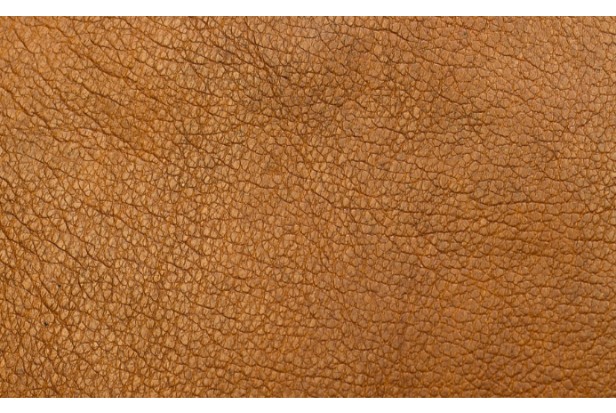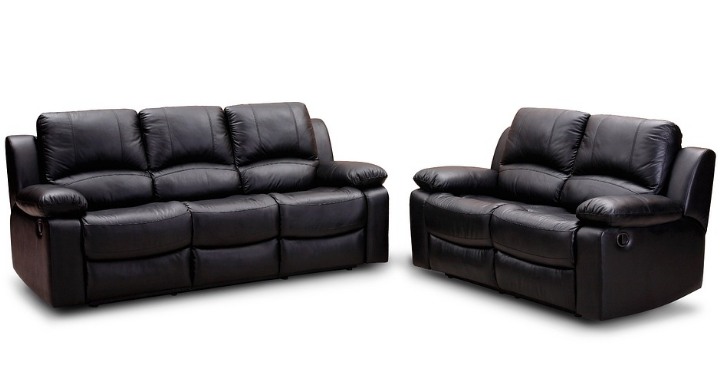
With the help of this guide, you’ll be able to shop for the eco-friendly or synthetic leather of your choice and contribute in any way you can to protecting the environment.
What is Eco Leather?
There is a lot of confusion surrounding the name eco leather, with many people believing it to mean a synthetic type of leather that wasn’t extracted from an animal.
However, eco leather refers to genuine leather that comes from an animal original by-product, with a different tanning process from others.
Due to the lack of a defined composition and real regulation, unlike other tanning and manufacturing processes, it is difficult to find products that are truly eco leather.
The key difference isn’t just one part of the process, but rather all of them, with an aim to create true leather products that have been made with minimal impact on the environment.
There are other benefits of eco leather besides its reduced environmental product. It’s considered a premium type of leather because of the longer process used to create it, and although it costs more than others, it’s been designed to last forever, provided you give it the right level of care.
In order to lessen the negative effects that leather typically has on customers, workers, and the environment, eco leather has been used in a variety of products.
There are eco leather handbags, wallets, clothes, interiors of cars, and other products, and even though it’s typically an expensive option because of the drawn-out process, it’s well worth it for everyone involved.
Eco Leather Vs Synthetic Leather
Synthetic leather is a further widely used leather product that frequently gets mistaken for eco leather. The main difference between these two is that synthetic leather doesn’t come from an animal by-product at all, and is a good choice for people who want to steer clear of animal products altogether.
The term “synthetic leather” can refer to a variety of materials, including PU, imitation, vegan, and faux leather.
These materials are made to look and feel like genuine leather which has been sourced from an animal, however, it’s not known to be as durable or soft.
There isn’t much of a difference between them in terms of environmental impact or sustainability, other than the fact that synthetic leather can be produced without using any animals for farming or slaughter.
The process to create this leather can still have negative impacts and is not known to be environmentally friendly.
Because synthetic leather is not made from organic materials and the manufacturing process is still quite onerous, it doesn’t degrade as quickly as eco leather.
The PVC and other synthetic materials used to make it aren’t biodegradable and it can sit in landfills for many years, doing a lot of harm to the environment as it attempts to break down or takes up space.

The Pros and Cons of Eco Leather
Eco leather has changed the way we develop this popular material but it’s not right for everyone. We’ve compiled a list of eco leather’s best and worst qualities so that you can decide whether it’s the right material for your upcoming purchase.
PROS
- Is durable and a reliable choice as a material for things like furniture, shoes, and handbags.
- Due to the longer and gentler processes, eco leather has a softer feel and appears to be made of more expensive materials.
- Has no discernible difference when dyed, tanned, and finished like other leathers.
- Giving the consumer a more environmentally friendly choice, every step of its creation, treatment, manufacturing, and transportation is carried out with a minimal impact on the environment.
CONS
- Making eco leather still uses animal byproducts, which is possibly inhumane.
- To keep in good condition, this special leather requires ongoing upkeep and care.
- is typically more expensive than other types of leather due to the longer manufacturing process.
Is Leather Eco-friendly?
Any leather substitute that doesn’t originate from an animal is known as eco-leather. Typically, vinyl or plant-based materials are used to create eco-leather. Some claim that animal-derived leather can occasionally be included in the category of eco-leather as long as it has been tanned and dyed using plant-based materials rather than toxic chemicals. Is leather eco friendly? Real animal leather, according to some leather enthusiasts, is never environmentally friendly because raising cows is typically done in an unethical manner and they emit so much carbon dioxide. (Did you know that one pair of leather shoes emits 10 kg of CO2 into the atmosphere? When you add up all the feet on this planet, those zeros don’t seem like much, but they keep going on and on.)
What is Eco Leather Made Of?
Vegan materials that resemble the feel and appearance of genuine leather are used to create eco-leather in its purest form. The two most common ones are PU, or polyurethane, and PVC, or polyvinyl chloride (which you may also be familiar with from your dad’s garage). PVC is made from fabric leather backing, topped with a foam layer, then skin layer, and finally, finished with a plastic surface coating. Whereas PU can be fabricated with other sustainable, eco-friendly materials, such as bio-polyoil to create a soft, durable alternative to real leather. Even the way PU wrinkles and feels is identical to real leather. Plus, PU uses no plastics and does not create dioxins, so it’s technically one of the greenest forms of eco-leather. Aside from all the environmental benefits of PU, its suppleness, softness, and strength are unmatched. Most customers can’t even tell the difference between PU and animal leather at first touch. It’s wearable, luxurious, and guilt-free.
It’s tough to choose between PVC and PU, but it really depends on what you are looking for in your leather products. PVC is significantly more durable than PU leather because of its multi-layered construction. (PVC is frequently used for upholstery and other leather items that are prone to nicks and stains.) In comparison to animal leather, PU leather is much softer and has a more organic feel. If you are looking for that buttery-soft leather backpack or a stand-out statement piece, then For you, PU eco-leather is a better choice.
Another less popular, but perhaps wilder, form of eco-leather is This vegan leather, known as Piñatex, is produced using pineapple scraps, or more precisely, shavings from pineapple plants that have been coated and used for other purposes. Although Piñatex originated in the Philippines, it has gained popularity in recent years and entered the global eco-fashion market.
How Long Does Eco Leather Last?
You must believe the label when buying eco-leather. You must carefully review the product information to ensure that the handbag or shoes you are purchasing are completely eco-friendly. The truth is that eco-leather is less likely to crack, peel, stain, or fade from UV light than genuine cow leather, which is why some customers worry that it won’t last as long as real leather.
PU eco-leather doesn’t contain any plastic, so it won’t become brittle and breakable over time like plastic products frequently do. Compared to animal leather, PU requires much less upkeep. In contrast to animal leather, which can start to crack over time as moisture remains in the fabric, most eco-leather can be cleaned easily with a rag and warm water.
Bottom Line
here’s a reason that eco-leather has surpassed its four-legged counterpart in durability, touch, and sustainability. Although who doesn’t appreciate some gorgeous vintage leather?, we’re not saying you have to throw away all the leather in your closet at this time.) But before you go shopping for that perfect motorcycle jacket, or all vegan bags, consider eco-leather. Your closet and Mother Earth will thank you for it.
Related Questions
One way we’re examining established practices and trying to improve them is through the use of eco leather.
They can be a good place to start if you want to change things but aren’t quite ready to stop using leather or synthetic leather products just yet. To help you better understand how eco leather products function, we’ve provided answers to some frequently asked questions (FAQs) about them.
Does Eco Leather Peel?
Faux leather can peel for a variety of reasons, but primarily because there is a weak adhesive holding the fabric to the plastic coating.
How Do You Take Care of Eco Leather?
While all genuine leather products are made to be strong and comfortable, maintaining them in good condition does require a special level of care, especially for items like furniture that are used frequently.
To care for them, keep them free from moisture and dust, and wipe them down now and then with a soft cloth to ensure they are kept free from marks.
Is Eco Leather Waterproof
Because it is durable and simple to clean, it needs less upkeep and care. It is also waterproof.
Does Eco Leather Last
Some shoppers are worried that eco-leather won’t have the same longevity as genuine cow leather, but the truth is that eco-leather is less likely to crack, peel, stain, or fade from UV light.
Does Eco Leather Peel?
Genuine leather products frequently experience a drying out and peeling issue with customers. Eco leather is no different, sadly, and needs a lot of maintenance to stay in good shape.
You can use specialized leather conditioners and keep the leather out of direct sunlight to stop it from peeling.
What is Fossil Eco Leather
In order to describe a more environmentally friendly method of processing the hides, Fossil began using the term “Eco Leather.”
What is Fossil Eco Leather Made Of
Eco-leather in its purest form is created from vegan materials that resemble the texture and appearance of genuine leather. Two of the most popular are PVC or Polyvinyl Chloride, (which you may also recognize from your dad’s garage), and PU or Polyurethane.
